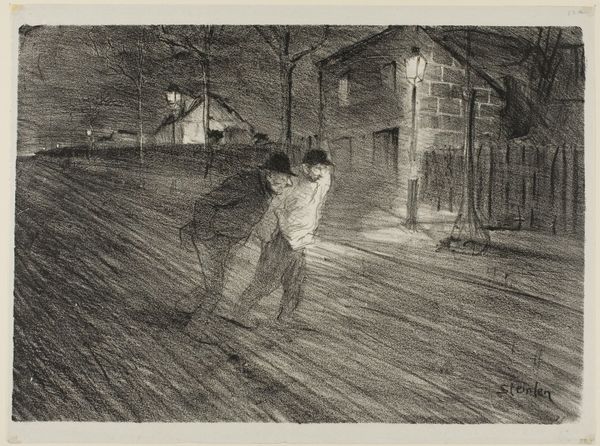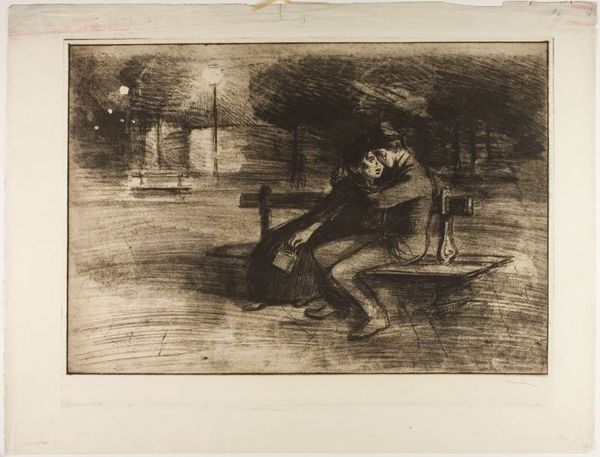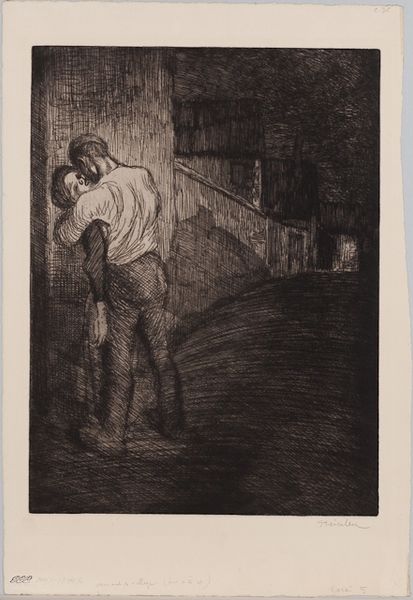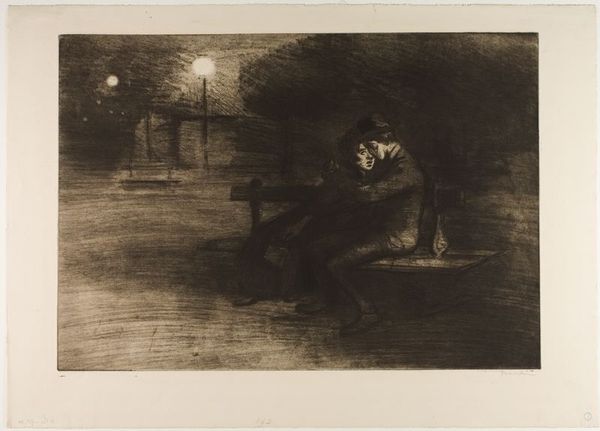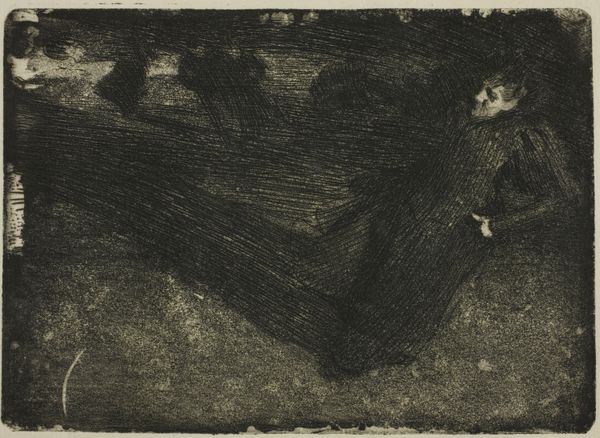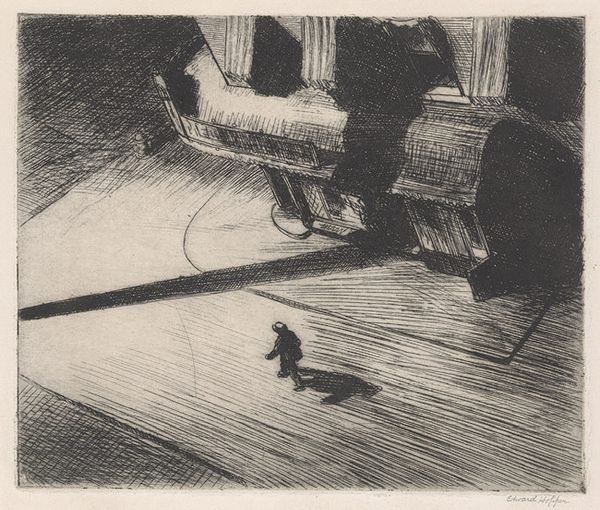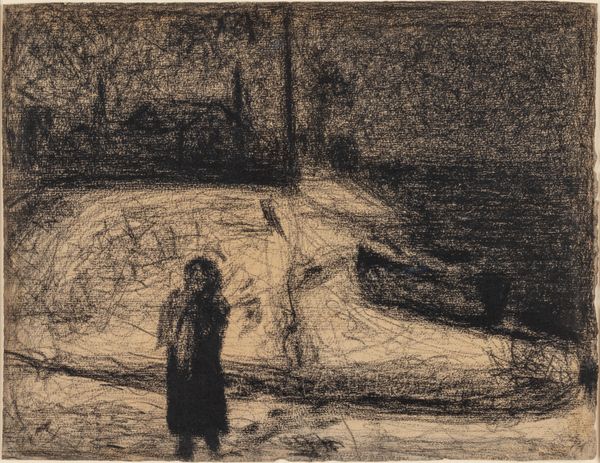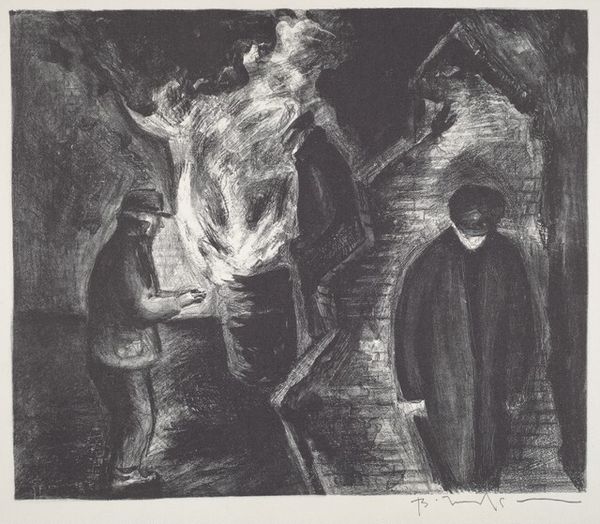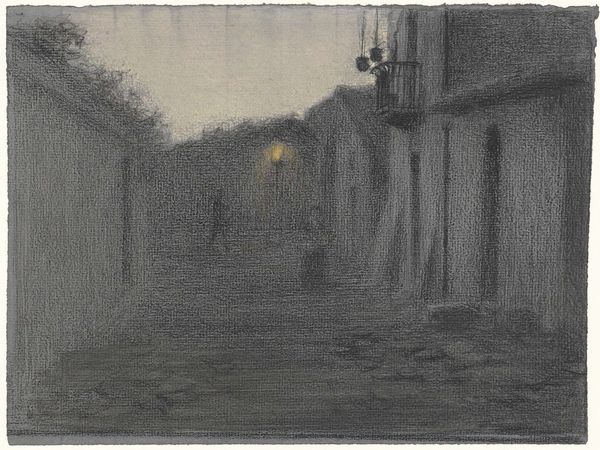
Copyright: Public domain
Curator: Here we have "La Rue Caulaincourt", a drawing by Théophile Alexandre Steinlen, created around 1896 using graphite and charcoal. Editor: Immediately, I'm struck by the heavy chiaroscuro. It's mostly blacks and greys that convey a palpable sense of loneliness. Curator: It certainly evokes a mood. This cityscape is more than just a record; it's imbued with a certain psychological weight. The streetlamps, for instance, symbols of civic order, are starkly contrasted against the figures hurrying along the dimly lit road. What stories might they tell? Editor: Note the density of lines. Steinlen uses directional hatching to model form and spatial recession. See how the street seems to slope away from us, using only line and tone. Also observe how effectively he contrasts the rough textures of the buildings with the blurred, softer rendering of the figures. Curator: Yes, this blending adds to the fleeting, dreamlike quality, reinforcing the ephemeral nature of urban existence. Each figure a carrier of his own narrative—perhaps poverty, or disillusionment. Editor: Precisely! This textural interplay establishes depth and atmospheric perspective within a composition that appears almost monochromatic, a testament to the expressive potential of light and shadow, especially the gaslight era and the alienation that can occur. Curator: And perhaps, looking deeper, the very choice of materials — charcoal and graphite — speaks to themes of transience and the passage of time. Graphite is almost timeless while charcoal degrades more easily, making it symbolic for a quick sketch with hidden meaning. Editor: An insightful reading! I initially focused solely on the formal elements – line, tone, composition – but I agree, Steinlen is clearly exploring complex emotional and social narratives through such simple yet masterful design and composition. Curator: The longer we gaze at these kinds of drawings, the more they seem to return our gaze, holding not just reflections of an artist's life, but the hopes and the fears of a time long ago. Editor: Absolutely. A brilliant lesson in how visual means and raw media, though muted, when placed together effectively can still capture potent realities from fleeting moments of the urban everyday.
Comments
No comments
Be the first to comment and join the conversation on the ultimate creative platform.
